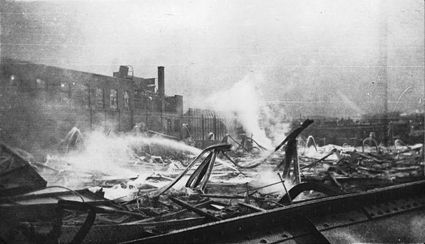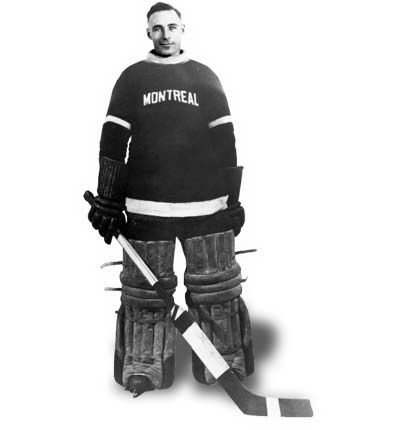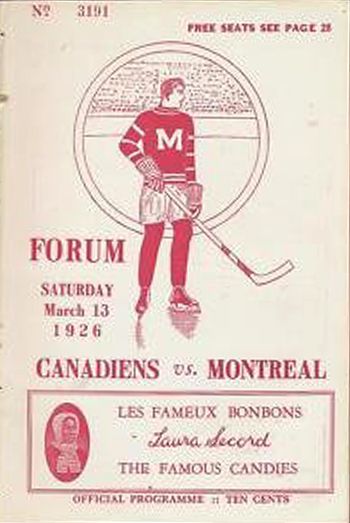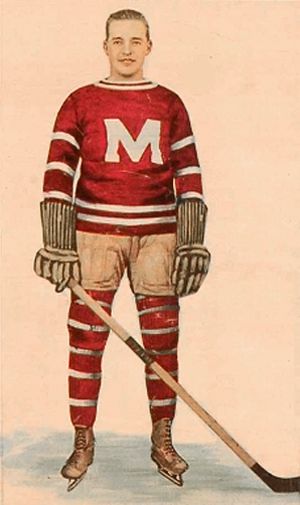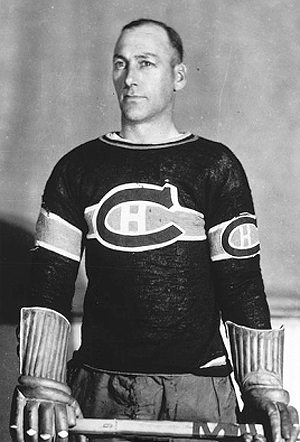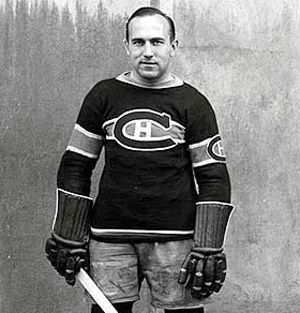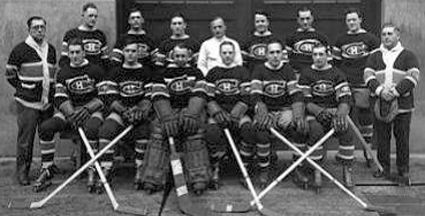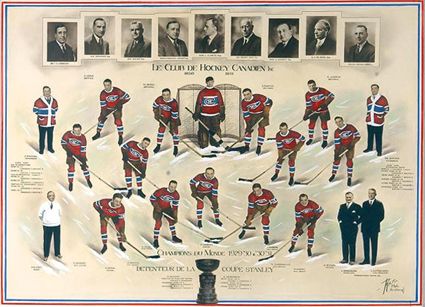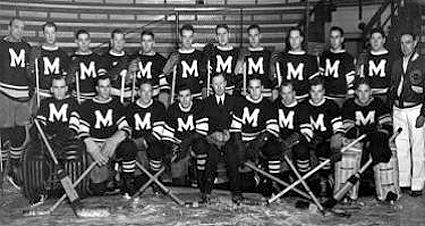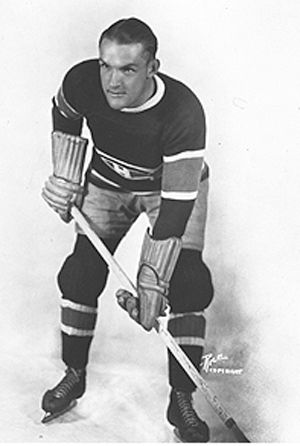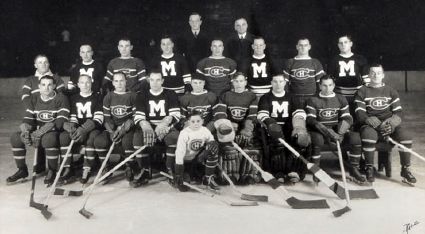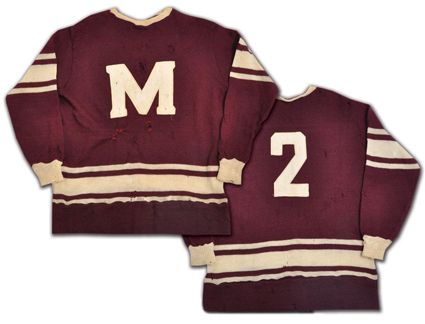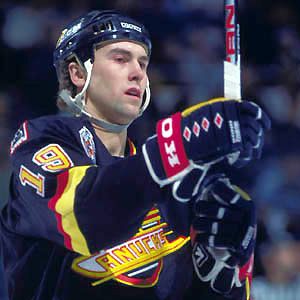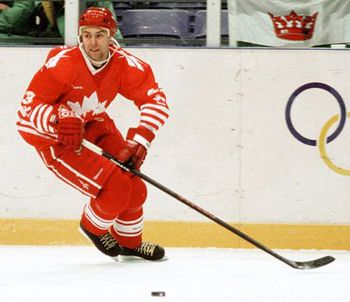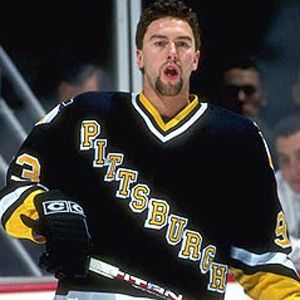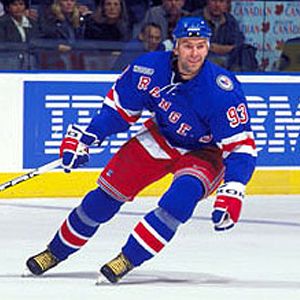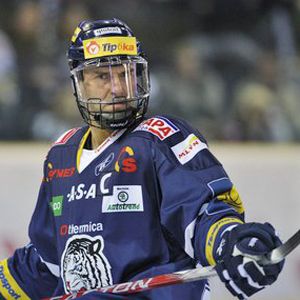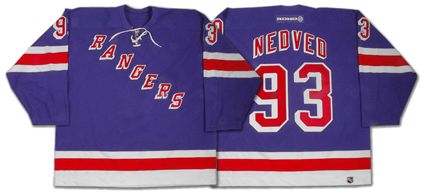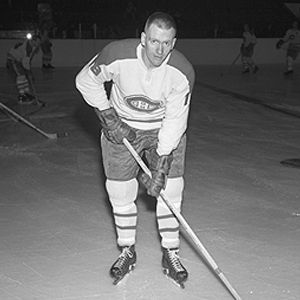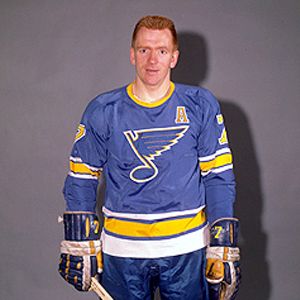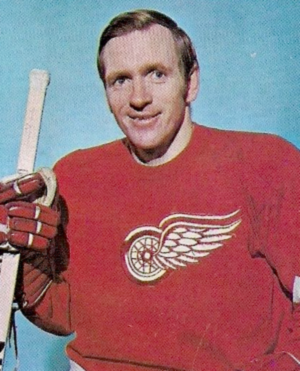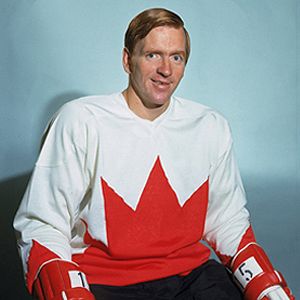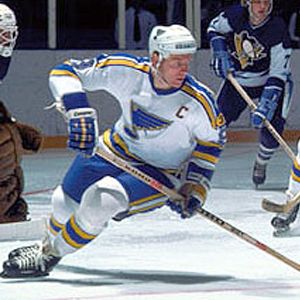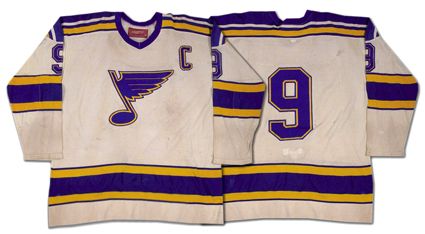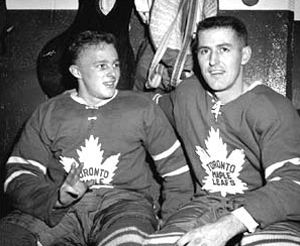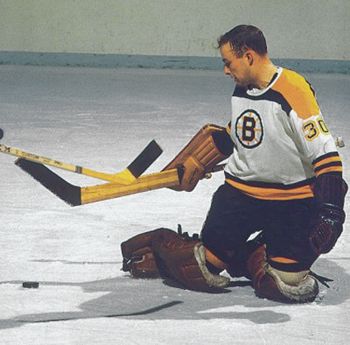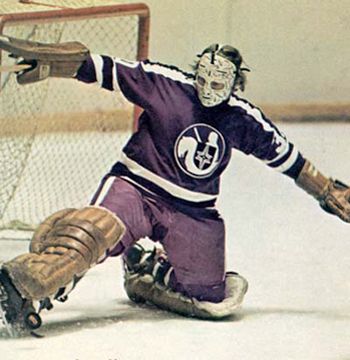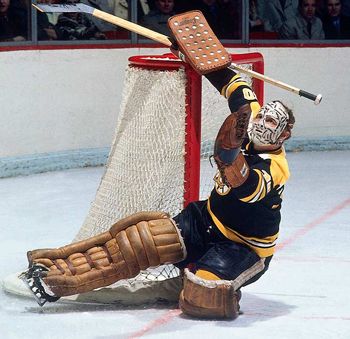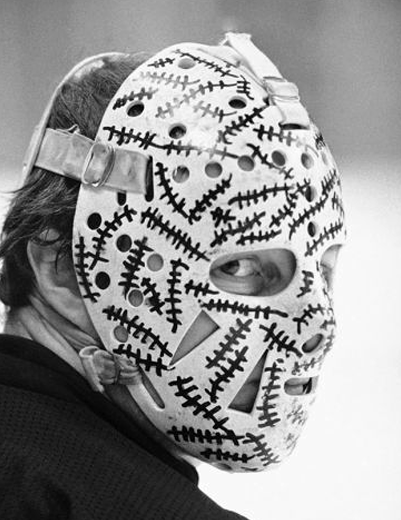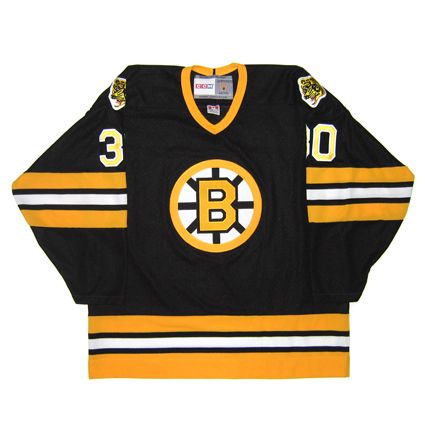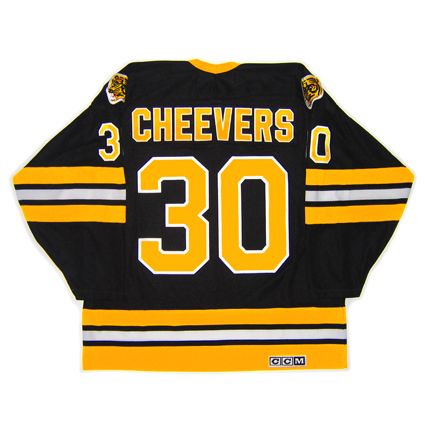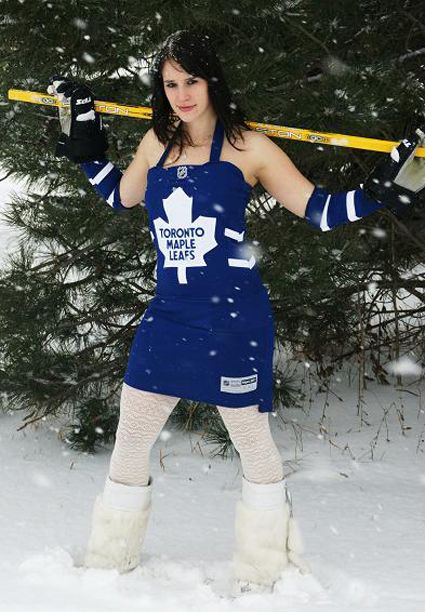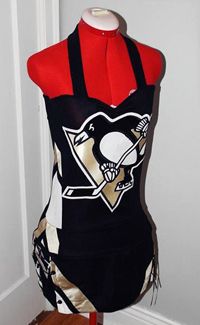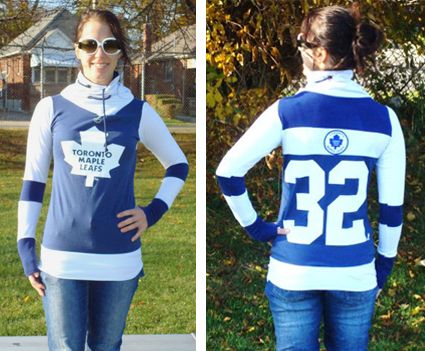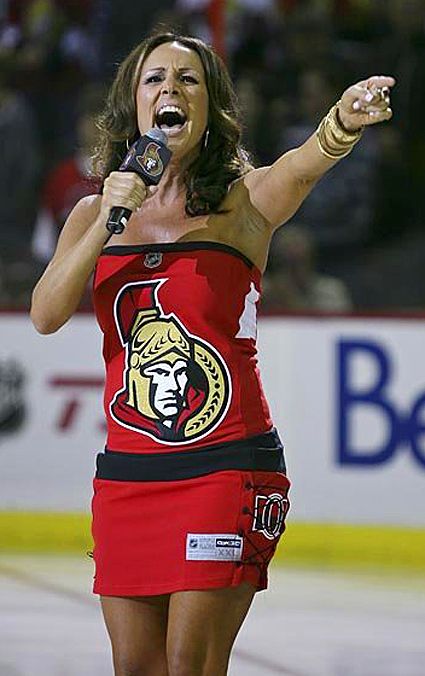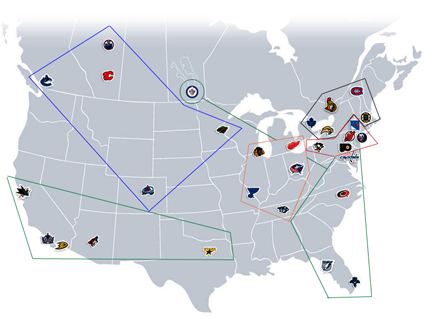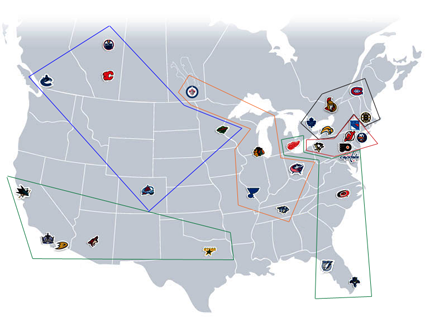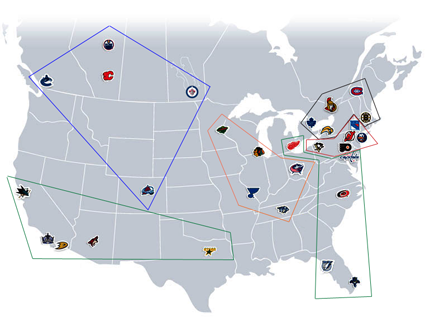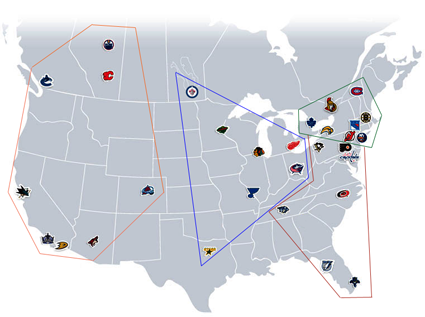Saturday, December 10, 2011
1934-35 Montreal Maroons Cy Wentworth Jersey
The Montreal Wanderers hockey club was founded in 1903 and competed during hockey's formative years. They were the darlings of the English speaking population of Montreal and won their first Stanley Cup in March of 1906. Over the next three years the Wanderers won six Stanley Cup challenges and were the first National Hockey Association champions in 1910, which once again made them the holders of the Stanley Cup.
They subsequently defended the cup one final time before falling on hard times, making the playoffs once in the next eight seasons. In 1917-18 they became a charter member of the new National Hockey League, but when the Montreal Arena burned to the ground only six games into the first NHL season. the club folded for good.
The Montreal Arena Fire aftermath
Meanwhile, another club had been formed in Montreal back in 1909 as a charter member of the NHA in order to give the French speaking population of Montreal a team to call their own. The team, stocked with French-Canadian players, the Montreal Canadiens, took some time to develop into a contender and did not win their first Stanley Cup until 1916. They too, would join the NHL in 1917, but would not win another Stanley Cup until 1924, by now the only game in town following the demise of the Wanderers in 1918.
That would all change later in the calendar year, when a new expansion club would be formed, the Montreal Maroons, which would begin as intense a rivalry that the league as ever seen, as the Maroons were formed to specifically appeal to the English speaking fans of Montreal. While the Canadiens played at the Mount Royal Arena, a new home was constructed for the Maroons, the Montreal Forum. While the Canadiens objected to a second team being placed in Montreal, they were compensated by expansion fees and the Maroons came to be.
When they began life, the Montreal Professional Hockey Club had no nickname. Their original president, James Strachan, had been an owner of the Wanderers and attempted to revive the name, but the media eventually began calling the club the Maroons after the color of the team's sweaters.
The two clubs rivalry would begin prior to even the Maroons first game having been played, as the Canadiens would usurp the Maroons by playing the first game ever at the Maroons shiny, new arena, as the Canadiens home rink's natural ice surface was not yet playable so early in the season. Subsequently, the Canadiens game on November 29th, 1924 was relocated to the Forum by the NHL despite objections from both the Forum and the Maroons.
It would be on this date in 1924 that the Canadiens and the Maroons would first meet in a rivalry that would last 14 years. In that game, hosted by the defending Stanley Cup champion Canadiens at the Mount Royal Arena in from of 5,000 fans, was won by the francophones 5-0 over the anglophones behind by Aurel Joliat's four goals and goaltender Georges Vezina's ninth career shutout, both of whom were future Hall of Famers.
Aurel Joliat
The next meeting between the two clubs would come on December 27th at the Forum with 11,000 on hand, ending in a 1-1 draw, as would their next meeting on January 17th. The Canadiens would eventually dominate the season series with shutouts on January 31st, again by a score of 5-0, and on February 18th by a score of 1-0. The Maroons would drop the sixth game of the season series 3-1 on March 7th to finish the season at 0-4-2 versus their crosstown rivals in a series of games described at "mini-wars on ice" - and in the stands among the supporters!
For their first season, the Maroons wore simple maroon sweaters with a small block "Montreal" across the chest.
Clint Benedict
The Maroons would turn the tables in short order, as they would defeat the Club de hockey Canadien for the first time ever on December 3rd, 1925 in the Canadiens opening game of the 1925-26 season by a score of 3-2. Nels Stewart scored the first and third goals for the Maroons, both at 15:40 of the first and third periods. Punch Broadbent would register the other Maroons goal, while the great Howie Morenz opened the scoring for the Canadiens and Billy Boucher evened the score at 2-2 midway through the third period before Stewart's game winner.
Stewart would go on to win the Hart Trophy as the league MVP after leading the league in scoring with 42 points as the club would qualify for the playoffs following a second place finish. After defeating both the Pittsburgh Pirates and Ottawa Senators to win the NHL playoffs, the Maroons would put themselves on the map with a 3 games to 1 defeat of the Victoria Cougars to capture the Stanley Cup in only their second season of play, which would see the arrival of the large block "M" logo that would adorn their sweaters for the remainder of their time in the NHL.
1926 Hart Trophy winner Nels Stewart
The rivalry between the two clubs would reach a new level in 1926-27, as the Canadiens would become permanent tenants of the Forum. The rivalry would be ratcheted up even further as the pair would meet in the playoffs for the first time, won by the Canadiens in a two-game, total-goals series. Game 1 was a 1-1 draw, and the Canadiens prevailed with a goal by Morenz at 12:05 of overtime to give them a final 2 goals to 1 margin. Clint Benedict of the Maroons would lead all goaltenders that season with a 1.42 goals against average yet the Canadiens George Hainsworth would win the Vezina Trophy while Herb Gardiner of the Canadiens would win the Hart Trophy.
1927 Hart Trophy winner Herb Gardiner
The teams would finish 1-2 in the Canadian Division in 1927-28 and face each other again in the playoffs when the Maroons advance to the semifinals after defeating Ottawa. In a mirror image of their first meeting, the opening game was a 2-2 tie followed by a 1-0 win, this time for the Maroons, at 8:20 of overtime on a goal by Russell Oatman. The Maroons would eventually fall in the fifth and final game of the cup finals. The Canadiens Morenz would win the Hart Trophy that season.
1928 Hart Trophy winner Howie Morenz
Hainsworth would win a well-earned Vezina Trophy for the Canadiens in 1928-29 thanks to a staggering 22 shutouts in 44 games.
The Maroons took the Canadian Division on a tie breaker in 1929-30, having won 23 games versus the Canadiens 21, as both teams tied with 51 points. They did not meet in the playoffs, as the Canadiens went on to win the Stanley Cup following an undefeated playoff run. Meanwhile, the Maroons' Stewart would win his second Hart Trophy that season.
The 1930 Stanley Cup champion Montreal Canadiens
Both teams again qualified for the playoffs in 1930-31 after the Canadiens won the division while the Maroons came third. The Maroons were blown out by the Rangers in Round 1 8 goals to 1. Meanwhile the Canadiens ousted the American Division champion Boston Bruins 3 goals to 2 and then won their second consecutive Stanley Cup by defeating the Chicago Black Hawks 3 games to 2, with every goal being decided by a goal and two games going to overtime, one double overtime and the other triple overtime, in likely the closest Stanley Cup Final series ever. The Canadiens' Morenz won the league scoring race with 49 points, 17 clear of second place, to win another Hart Trophy, which he would capture once again in 1931-32.
The 1931 Stanley Cup champion Montreal Canadiens
The 1932-33 season saw Baldy Northcott, Hooley Smith and Paul Haynes of the Maroons finish 3-4-5 in league scoring.
Russ Blinco was the NHL Rookie of the Year in 1933-34 for the Maroons while Joliat took home the Hart Trophy for the Canadiens.
The 1934-35 season would see the Maroons edge the Chicago Black Hawks after a 0-0 tie in Game 1 and an overtime winner in a 1-0 total goals series. After defeating the Rangers 2-1 and advancing after a 3-3 draw, the Maroons swept the Toronto Maple Leafs in their best of three final series to capture their second Stanley Cup after their undefeated playoff run (5-0-2).
The 1935 Stanley Cup champion Montreal Maroons
With the Great Depression in full effect, both Montreal clubs were having great difficulty drawing fans, with the Maroons particularly hurt due to the smaller anglophone fanbase in Montreal. The rest of the league was also suffering great difficulties, as the league shrank from 10 clubs in 1931 to 8 in 1935. Still, the Maroons would go on to win the Canadian Division once again in 1935-36. Later during that season's playoffs, the Maroons would battle the Detroit Red Wings in what remains the longest game in NHL history, a 6 overtime loss on March 24, 1936.
The Canadiens would edge the Maroons for the division title in 1936-37 by a single point, as the financially struggling Maroons began to sell of their better players, with team captain and franchise all-time leading scorer Smith departing for Boston. In contrast, the Canadiens' Babe Siebert was the Hart Trophy winner for the season.
1927 Hart Trophy winner Babe Siebert
The Maroons final season would come in 1937-38, but before it would begin, the two rival clubs would come together like never before. Following the premature death of the Canadiens' Morenz, the second all-star game in league history would be held as a benefit for the Morenz family, in which a team made up of both Canadiens and Maroons would face an all-star squad made up of members of the rest of the league's clubs. The All-Stars would win the game by a score of 6-5.
The Maroons and Canadiens team photo
from the 1937 Howie Morenz Benefit Game
The Maroons endured a coaching change on their way to a last place finish in the league with a 12-30-6 record. After suffering with the lowest attendance in the league for three seasons in a row, the final Maroons game was played against the Canadiens on March 17, 1938, a 6-3 win for the Canadiens. The series between the two clubs featured intense battles both on the ice, as well as between the rival groups of supporters. While both teams would win a pair of Stanley Cups during the Maroon's 14 year history, the series would eventually end in favor of the Canadiens at 40-35-17, with the Canadiens posting 18 shutouts against the rival Maroons.
The Maroons hold the distinction of being the last Canadian club added to the NHL until 1970 with the arrival of the Vancouver Canucks. They are also the last team to have won the Stanley Cup and then later ceased operations and also the last non-Original 6 team to win the Stanley Cup until the 1974 Philadelphia Flyers.
Following the demise of the Maroons, the anglophones of Montreal were left with two options, become fans of the local Canadiens, or switch their allegiance to the Toronto Maple Leafs, who hailed from English Canada.
Today's featured jersey is a 1934-35 Montreal Maroons Cy Wentworth jersey from the Maroons second Stanley Cup winning season. The Maroons played in an era when teams did not necessarily have home and road sweaters, and if they did possess a white sweater, it was only worn on occasions when their dark sweaters were too similar to their opponents dark sweaters, such as the Maple Leafs wearing white when facing the blue-clad Rangers.
With the Maroons color being unique to the league, they never saw the need for an alternate design and stuck with just dark sweaters for their entire existence.
Labels:
Montreal Canadiens,
Montreal Maroons
Friday, December 9, 2011
1993-94 Canadian National Team Petr Nedvěd Jersey
Born on this date in 1971 in Liberec, Czechoslovakia, Petr Nedvěd came to Calgary, Alberta for an international midget tournament at the age of 17. After scoring 17 goals and 9 assists in 9 games to star in the tournament, Nedvěd made the bold, life-changing decision to defect without even informing his parents of his plan. With just $20 and the help of another Czech, whom he refuses to identify all these years later, he walked into a police station and out from under the rule of the Communist Party.
To begin his path to the NHL, Nedvěd joined the Seattle Thunderbirds of the WHL and caught the attention of NHL scouts by scoring 65 goals and 145 points in 71 games to place sixth in the WHL scoring race. The following spring he was drafted with the second overall pick in the 1990 NHL Entry Draft by the Vancouver Canucks.
He jumped straight to the NHL the following season, seeing action in 61 games and scoring 16 points. His point total more than doubled during the 1991-92 season to 37 points and quite nearly doubled that in 1992-93 when he arrived offensively with a 38 goal 71 point season. After the Canucks were eliminated by the Los Angeles Kings in the playoffs, Nedvěd asked King's superstar Wayne Gretzky for a game stick, which drew the ire of Canucks fans, especially after three seasons of playoff struggles by Nedvěd, who had scored just 3 goals in 28 postseason games.
The relationship with Vancouver was fractured beyond repair at the beginning of the 1993-94 season when Nedvěd held out in a bitter contract dispute. During his holdout, he became a Canadian citizen which allowed him to join the Canadian National Team and compete in the 1994 Olympics for Canada where he earned a silver medal after scoring 5 goals in 8 games.
He eventually signed with the St. Louis Blues near the trading deadline, with another player being awarded to the Canucks as compensation.
After playing less than 20 games for the Blues to finish the season, Nedvěd was traded to the New York Rangers for the 1994-95 season, which was limited to 48 games due to a labor dispute. Nedvěd was then involved in a headline making trade, as he and Sergei Zubov were sent to the Pittsburgh Penguins for Luc Robitaille and Ulf Samuelsson.
Now a member of the offensive juggernaut led by Mario Lemieux, Jaromir Jagr and Ron Francis, Nedvěd enjoyed the best offensive season of his career with 45 goals and 99 points. He would score a further 10 goals and 20 points in 18 playoff games, which included a goal in the fourth overtime in a game against the Washington Capitals when he patiently walked around a prone Capitals defenseman and shot the puck through traffic for the game winner. The 79:15 minutes of overtime made it the longest game in the NHL in 60 years.
Before the next NHL season began, Nedvěd played for the Czech Republic in the 1996 World Cup of Hockey, as the now Canadian citizen was not restricted by the rules of the IIHF, as the tournament was under the rules of the NHL.
His second season with the Penguins had Nedvěd scoring 33 goals and 71 points, but once gain a contract dispute was on the horizon. He began the 1997-98 season with HC Sparta Praha of the Czech Extraliga, but after just 5 games, the NHL season began and rules did not allow him to continue. The only other games he played that season amounted to 9 with second and third division Czech clubs and 3 with the Las Vegas Thunder of the IHL in a lost season for Nedvěd.
Sticking to his guns, Nedvěd returned to Las Vegas for the start of the 1998-99 season before Pittsburgh finally sent Nedvěd on his way once more, back to the Rangers in late November. Finally, Nedvěd would find some stability in his career, playing for the Rangers for six seasons, which included highs of 32 goals and 78 points in 2000-01 and leading the club in scoring in 2000 and 2003.
The Rangers then traded Nedvěd to the Edmonton Oilers at the trade deadline in 2004. His stay in Edmonton was brief, just 16 games.
He spent the lockout season of 2004-05 with Sparta Praha in the Czech Republic before signing as a free agent with the Phoenix Coyotes for the 2005-06 season. Or so he thought. 25 games into his Coyotes career, Nedvěd was dealt to the Philadelphia Flyers. After starting the next season with 21 games for the Flyers, he was claimed off of waivers by the Oilers after having been splitting time with the Flyers and the Philadelphia Phantoms in the AHL.
After finishing the season with Edmonton, Nedvěd returned to Europe and signed with Sparta for the 2007-08 season. He moved to HC Bílí Tygri Liberec in his hometown after being released by the Rangers during training camp.
He would compete for Liberec for three seasons, highlighted by 55 points in 45 games in 2010-11. For the 2011-12 season, Nedvěd, who turns 40 today, currently leads the Tigers in scoring while serving as the captain of the team, but is currently out following surgery to his jaw.
Due to Nedved's holdouts, which contributed to his frequent trades, his Sillinger Number (the number of different jersey worn in one's NHL career) is 24, thanks in part to his time with the Rangers, as they wore not only home and road sweaters, but two colors of alternate jerseys as well as a pair of vintage throwbacks and a special one-off jersey during his time in New York.
Today's featured jersey is a 1993-94 Team Canada Petr Nedvěd jersey, as worn in the 1994 Olympics in Lillehammer, Norway, which concluded with the famous shootout in the gold medal final, won by Sweden's Peter Forsberg's dramatic move.
This Team Canada Nedved jersey is emblematic of not only his defection from Czechoslovakia to his adopted country of Canada, but unfortunately also his multiple contract holdouts, as he would normally have been in the midst of an NHL season at the time of the 1994 Olympics.
The Canadian National Team Programme of Excellence, founded by Father David Bauer, began in 1983 with the purpose of forming a club which would play together for an extended schedule in preparation for the Olympics as well as other international tournaments. The program lasted until 1998, when NHL professionals began competing in the Olympics, and met with limited, but increasing success, winning two silver medals in it's final two tries.
Bonus Jersey: Today's bonus jersey is a 2002-03 New York Rangers Petr Nedved jersey from the team the well-traveled Nedved is most closely associated with due to his five year run with the club during his second stint with the club.
Today's video segment begins with Nedved's famous goal in the fourth overtime of the Penguins playoff game against Washington.
Here is a story on Nedved and his defection from Czechoslovakia.
Labels:
Canada,
Nedved Petr,
New York Rangers
Thursday, December 8, 2011
1977-78 St. Louis Blues Red Berenson Jersey
Red Berenson, born on this date in 1939, began by playing with the Regina Pats in Canadian junior hockey, which included two Memorial Cup appearances in the three years he played for the Pats, highlighted by his 1957-58 season during which he scored 46 goals and 95 points in 51 games.
He then joined the Belleville McFarlands, who represented Canada at the 1959 World Championships, where they captured the gold medal thanks in part to Berenson's 9 goals in 8 games. Upon his return from Europe, he joined the Flin Flon Bombers for playoffs to conclude his busy season.
Berenson then made the unusual and somewhat controversial choice of joining the University of Michigan Wolverines of the Western Collegiate Hockey Association for the 1959-60 season, as his NHL rights holders, the Montreal Canadians, advised him against the move. As a freshman, he scored 19 points, a total that jumped to 49 as a sophomore before peaking at 70 as a junior in 1962. Following the conclusion of the NCAA playoffs, Berenson joined the Canadiens for four regular season games (including scoring his first NHL goal) and five playoff games, becoming the first Canadian to ever make the jump from American college hockey to the NHL.
He split the next season between the Canadiens and the their Hull-Ottawa minor league club. He cracked the Montreal lineup for the entire 1963-64 (16 points in 69 games) but faced the issue of the incredible depth Montreal possessed at center, with the likes of Jean Beliveau, Henri Richard and Ralph Backstrom. As a result, Berenson played with the American Hockey League's Quebec Aces for essentially all of the 1964-65 season and split his time between Quebec and Montreal in 1965-66. Despite playing just 3 regular season games for Montreal in 1964-65, he was called up for the playoffs and appeared in 9 games as Montreal won the Stanley Cup, the only one of Berenson's career.
With the lineup in Montreal deeper than the ocean, Berenson was dealt to the New York Rangers in the 1966 off-season, but over the course of 49 games divided over two seasons, he only managed to score 8 total points. Rather than finding himself on his way back to the minors though, this was the season of the great NHL expansion, where six new clubs joined the league, creating over 120 new jobs for players, one of which was waiting for Berenson in St. Louis with the Blues following a trade.
Berenson was immediately energized by his new situation and reeled off 22 goals and 51 points in 55 games, eclipsing the 45 total points he had scored in his career up to that point. His 55 points also made him the leading scorer for the Blues despite spotting everyone a 20 game head start! St. Louis then, benefitting from being in the West Division, made up of the six new expansion clubs, made it all the way to the Stanley Cup Finals.
Now firmly established as a team leader, Berenson again led the Blues with 35 goals and 82 points in 1968-69, 34 points more than Gary Sabourin's second-most 48, which tied Beliveau for 8th place in league scoring.
Also during that season, he became the first player since 1944 to score 6 goals in a game, which he did against the Flyers in Philadelphia, making him the first ever to accomplish the feat on the road. Of his 6 goals, four came in a span of 9 minutes and none of the 6 were scored on the power play or off deflections.
During the postseason, St. Louis again made it to the Stanley Cup finals as Berenson contributed 10 points in 12 games.
Berenson was named team captain for 1970-71, but his third season in St. Louis lasted only 45 games, as, with 42 points to his credit, he was traded to the Detroit Red Wings in February of 1971 just as the Red Wings entered the worst doldrums in franchise history. In Berenson's five seasons in Detroit, the Red Wings would not qualify for the playoffs even once. Still, he continued to play his strong brand of two-way hockey and managed to score 69 points in 1971-72 and 66 in 1973-74. He also served as the Red Wings captain in 1973.
Also during his time in Detroit, Berenson was named a member of Team Canada for the 1072 Summit Series against the Soviet Union, appearing in a pair of games.
Berenson then returned to the Blues for the second half of 1974-75, only this time in a checking role, as his point production would not reach 50 points during the final four seasons of his career, although he still was a contributor on offense, recording two more 20 goal seasons in 1975-76 and 1976-77 to give him eight for his 17 year NHL career, during which he played in 987 games, scoring 261 goals and 658 points and appeared in six NHL All-Star Games. His leadership was also welcomed back in St. Louis, as he served two stints as captain for the Blues in 1976 and 1977-78.
After his retirement as a player, Berenson became the Blues head coach midway through the 1979-80 season and later won the Jack Adams Award as the league's Coach of the Year. By 1984, Berenson became the head coach at the University of Michigan, a position he has held to this day, a span of over 25 years, which has included two national championships in 1996 and 1998.
Today's featured jersey is a 1977-78 St. Louis Blues Red Berenson jersey. The original Blues white sweaters had a single wide, yellow stripe outlined in blue on the arms and waist, which changed to the pattern of blue trimmed in yellow and outlined in blue for their second season of 1968-69. This jersey remained virtually unchanged all the way through the 1983-84 season, with the main change being the addition of names on the back in 1974. With this jersey being from the 1977-78 season, it's clear that the nameplate has been removed at some point.
While Berenson originally wore #7 in his first stint with the Blues, Gary Unger was wearing it when he returned and Berenson went with #9.
Today's video segment begins with Berenson discussing his time in St. Louis and the impressive history of Blues players who have worn #7.
Next is the ceremony honoring the four Blues notables to have worn #7, Berenson, Unger, Joe Mullen and Keith Tkachuk.
Labels:
Berenson Red,
St. Louis Blues
Wednesday, December 7, 2011
1979-80 Boston Bruins Gerry Cheevers Jersey
Gerry Cheevers was a colorful character in an era filled with colorful characters and he ushered in an even more colorful era in hockey history - and did so in black and white.
Cheevers, who was born on this date in 1940 first broke into the NHL with the Toronto Maple Leafs for two games as an injury replacement in the 1961-62 season.
Gerry Cheevers after his NHL debut with Billy Harris,
who had a hat trick in the Maple Leafs 6-4 victory
Unable to crack the Toronto lineup, mainly due to the presence of future Hall of Famer Johnny Bower, he spent the majority of the next four seasons with the Rochester Americans of the American Hockey League, where he set a single season record with 48 wins in 1964-65 which still stands today. In the playoffs that season, Cheevers led the Amerks to the Calder Cup championship.
He moved to the Oklahoma City Blazers in 1965-66 and also made his Boston Bruins debut with seven games, but failed to impress with an 0-4-1 record.
The following season Cheevers split time between the Blazers and Bruins and saw action in 22 games before taking over as the Bruins number one goaltender in 1967-68 just as the lowly Bruins were gearing up to dominate the league with both Bobby Orr and Phil Esposito now in the fold as well.
After playing an NHL career high 52 games and posting a record of 24-8-8 in 1969-70, Cheevers backstopped the Bruins to the 1970 Stanley Cup by going 12-1 in 13 playoff games.
The 1969-70 Stanley Cup champion Boston Bruins
In 1971-72 Cheevers set another record when he went undefeated in 32 consecutive starts (24-0-8), a record which has never been equalled. His final record for the season stood at 27-5-8 and in eight playoff games he won six and lost two as the Bruins again captured the Stanley Cup.
Despite the success the high flying Bruins were enjoying at the time, Cheevers accepted a lucrative $1.4 million offer to join the Cleveland Crusaders of the fledgling World Hockey Association for the 1972-73 season. His workload dramatically increased in Cleveland, rising from an average of 40 games with Boston the three previous seasons to 54 for the next three years in Cleveland.
Following his second season in the WHA, Cheevers was selected to play for Team Canada in the 1974 Summit Series against the Soviet Union for his first taste of international hockey. In a series dominated by the Soviets, Cheevers went 1-3-3 and was in goal for the only Canadian victory of the series.
After another season an a half in Cleveland, Cheevers asked to be bought out of his contract midway through the 1975-76 campaign and immediately returned to the Bruins.
Still in top form, Cheevers played another four seasons with a high of 30 wins in 1976-77 and was named to the Team Canada roster for the 1976 Canada Cup and the NHL All-Star team which faced the Soviet Union in the 1979 Challenge Cup before wrapping up his playing career following the 1979-80 season.
In all, Cheevers won 230 games in the NHL and 79 while in the WHA for 309 career victories.
Never one to embrace practice, Cheevers was hit by a puck one day and used it as an excuse to beat a hasty retreat to the dressing room. He relates, "I was trying to get out of practice one day when this shot that couldn't have broken an egg hit me in the mask. I faked a serious injury and went into the dressing room. I was sitting there having a Coke when [Bruins head coach] Harry Sinden came in and told me to get back out onto the ice. All the guys were laughing, so I knew I had to do something. I told the trainer to paint a 30-stitch gash on the mask. Then I went out and told Harry, See how bad it is!"
From then on, whenever Cheevers took a puck to the head, Frosty Forristall, the Bruins trainer, would calculate where the impact took place and how many stitches it would have resulted in, giving rise to the colorful era of the decorated goalie mask with his iconic black and white design.
Cheevers was elected to the Hockey Hall of Fame in 1985, where his ground breaking mask also resides.
Today's featured jersey is a 1979-80 Boston Bruins Gerry Cheevers jersey. The origins of this design can be traced back to 1967, a design which was simplified in 1974 when the yellow shoulders and lace-up collar disappeared. The secondary logos were added to the shoulders in 1976 and the names on the back arrived one year later. The jersey would remain unchanged through the 1994-95 season.
Today's video segment begins with his profile from the excellent Legends of Hockey series.
Next, a profile of Cheevers from his days in the World Hockey Association with the Cleveland Crusaders.
Finally, a tribute song to Gerry Cheevers from the band Chixdiggit.
Labels:
Boston Bruins,
Cheevers Gerry
Tuesday, December 6, 2011
Third String Goalie Holiday Shopping Guide - The Little Black Jersey Co.
Last year we ran this post about discovering Lise and her creative talents, which allows her to convert a hockey jersey into a dress.
Lise modeling one of her own creations
In addition to her ability to do the conversions, she also accepts custom orders to create them for a nominal fee.
Lise: It was actually pretty crazy! I couldn’t believe how many newspapers and radio shows called me, and how many internet sites picked up the story after the original Third String Goalie blog post. There was a ton of support and also more than a little judgement – but as a Leaf fan I can take it all in stride.
Penguins jersey beforeaaaaaaaaaaaPenguins jersey after
Once our post ran, we simply figured it would add some interesting variety to our blog and hopefully send some business Lise's way for being kind enough to let us feature her creations and answer our questions and that would be that.
However, wanting to drive some extra traffic to the blog that day to increase Lise's chance of getting a few orders for Christmas, we sent a link to our article to Paul Lukas, who writes the widely read blog Uni Watch, as any previous link from Uni Watch has always resulted in a five fold increase in our traffic for the day. Unbeknownst to us, our timing could not have been better, as Paul also writes a column for ESPN.com's Page 2 section and had just completed his annual holiday gift guide. Paul was kind enough to add a link to our blog not only on Uni Watch, but on ESPN.com as well. Fantastic!
Thinking that was pretty cool, we had no idea that was just the tip of the iceberg, as the ESPN story was then picked up by Fark.com, which caused our traffic spike off the charts! That mention caused our article to be reposted on various websites and message boards, including the widely read Puck Daddy blog on Yahoo!, resulting in a 2500% increase in our average daily traffic! The residual effect carried over and we had a ten fold increase the second day, nearly 7 times our normal the third day, 5 times on day four and twice our usual business on day five as people came across the various links that had been posted.
Lise flying the flag of her native Canada
Meanwhile, Lise was being contacted by various newspapers, radio and TV outlets, and not just ones local to her, but national ones! Being in at the source of an internet sensation certainly was a thrill for us and for Lise, who was interviewed by the Vancouver Sun, NHL Home Ice Radio, and was even asked to make four jersey dresses for a fashion show which appeared on the RDS Network (the French version of TSN/ESPN) in Canada!
Lise's inteview on NHL Home Ice
A year has now passed since our first article on Lise and we wanted to check in with her to see what she has been up to and what new creations she has made.
*********
TSG: How was it to have your small side business suddenly attract so much attention, and on a national scale too?
TSG: Approximately how many dresses had you sold before last year's article and how many have you sold since?
Lise: Previously I was only making about 1-2 custom orders a month, which skyrocketed after the article and Christmas to 1-3 a week, took most of the summer off but now I’m back at it! Like the Leafs, things have taken off since the middle of last season! Unlike the Leafs, Bruins fans seem to like me...
TSG: Have you expanded your offerings in the last year?
Lise: I had a lot of people asking me for different things so now I offer to make hockey themed t-shirts into stylish and fun long sleeved women`s tops. I also expanded recently into the NFL and made my first NFL jersey dress (Go Jets!)
TSG: Have you been to any Maple Leafs games in your creations recently? By chance did anyone recognize you from being online?
Lise: I have yet to grace the Temple (ACC) with my presence this year, but I wore my creations to games last year and they were well received, but I`m not quite famous enough to be readily recognizable in public. I am hoping to be in attendance at a game in February and will be sporting a new dress I am making from the Leafs new third jersey (how awesome is the new third jersey? Right?). Someone online did send me a press photo that showed a fashionable Pens fan at a game in a dress I made for her. That was awesome!... unlike the Habs... who are terrible.
Lise showing off one of her t-shirt conversions
TSG: Do you have any dresses that are pre-made that can be delivered in time for Christmas?
Lise: Yep, I have a have a couple. Rangers and Kings available for purchase on ETSY.
TSG: If someone were to order a custom dress, when could they expect it and how much does it cost?
Lise: Turn around time is one week or less from the time I receive the jersey, or alternatively they can have me purchase a brand new jersey of their choice, in which case it is in the mail within a week from the time they order it. Cost aside from jersey-purchasing varies from $65-$100 for alteration depending on what style is requested. The whole process is listed in the custom order section on my ETSY site.
Lise: Short answer – I don`t sleep. Long answer – I love what I do, and I watch a lot of hockey -- this is when I get most of my inspiration and do my best work.
TSG: Where do you find the time to create so many when you are a Ph. D. student majoring in Biochemistry and Biomedical Science?
Lise: ........ Not exactly ; )
*********
Here is a look at some of her creations over the last year, which shows the variety she can create even when using the one team's basic jersey as a starting point.
In addition, her jersey dresses are now starting to make waves across the NHL, as evidenced by Tammy Laverty wearing one of Lise's jersey dresses while sining the national anthem before an Ottawa Sentators game in September of this year.
Tammy Laverty looking hot in one of Lise's jersey conversions
If you would like to order your own custom hockey jersey dress or have a t-shirt converted, just contact Lise through her Etsy shop, Jersey Mods - The Little Black Jersey Co. or her JerseyMods Facebook page.
Thanks so much Lise for taking the time to answer our questions. We hope a few orders for jersey dresses come your way, as we really love your creativity and your various projects, plus any girl who has that many jerseys around the house is our kind of people!
Monday, December 5, 2011
2012-13 NHL Realignment
With the NHL Governors meetings happening in Florida today and tomorrow, it's time to revisit what has proven to be a popular post we made earlier regarding our thoughts on NHL realignment necessitated by the relocation of the Atlanta Thrashers from the southeastern United States to central Canada where they became the Winnipeg Jets.
First, let's take a look at where things stand right now.
Current 2011-12 NHL Division Map
The things to note are the compactness of the Northeast and Atlantic Divisions, especially compared with the Northwest and Pacific Divisions in the Western Conference. Also of note are the distances from both Minnesota and Dallas, both located in the Central Time Zone, from all the other teams in their divisions, none of which are even located in the same time zone.
Obviously, with the late relocation of the Thrashers to Manitoba before the 2011-12 season, the Jets were forced to remain in the Southeast Division this season, a situation that all agree needs to be rectified.
Apparently the Governors will vote on which of two proposals they prefer, one of which simply is a straight swap that moves the Detroit Red Wings to the Eastern Conference with Winnipeg taking their place in the Western Conference.
Proposed 2012-13 NHL Realignment - Detroit / Winnipeg straight swap
To us, this is an entirely unacceptable option, as keeping the current divisions relatively unchanged keeps in place some glaring mistakes of the current system, mainly leaving the Dallas Stars stranded in the Pacific Division, 866 miles from their nearest neighbors in Phoenix and still with no other divisional clubs in their time zone, which to us is intolerable. Additionally, Minnesota remains stuck in the Northwest Division along with three teams located in Canada and four teams outside of it's time zone.
Another issue with moving Detroit east in a straight swap, is their now relative isolation 400 miles from their closest division neighbor in Washington D. C. and a long way from the two Florida clubs, with the Panthers being over 1100 miles away.
Often repeated is the fact Detroit wants to move east and has apparently been promised by the NHL that they will be moved when the first opportunity arrives, but Jeff Marek of Sportsnet in Canada has also been mentioning that late Chicago owner Bill Wirtz was also promised that Chicago would never be separated from Detroit, in direct conflict with any promises made to the Red Wings.
Another issue we have with a straight swap is moving Winnipeg to Detroit's place in the Central Division. At the very least we'd put Winnipeg in the Northwest with fellow Ccanadian clubs Vancouver, Edmonton and Calgary and switch Minnesota to the Central with Minnesota's traditional Norris Division rivals Chicago and St. Louis. We know the Canadian teams would welcome Winnipeg and it would take many of the Wild's border crossings out of their travel schedule and group them in with other central time zone clubs, which they would certainly welcome.
Proposed 2012-13 NHL Realignment - Detroit / Winnipeg modified swap
Now let's look at our proposal for 2012-13. To oversimplify, currently the continent west of the Mississippi River is essentially divided horizontally into a northern group (the Northwest Division) and a southern group (the Pacific Division). What we propose is to make the divisional alignments based on vertical divisions, rather than the current horizontal alignments. Additionally, we also would embrace the American Hockey League model, reducing the number of divisions to just four. Each conference would be made of one seven and one eight team division. Having fewer divisions of more teams would allow more clubs to be accommodated as far as their desires to be paired with traditional rivals.
The method we would use to place the teams in each of the four divisions begins in the northeast and places Montreal, Ottawa and Toronto together, adding in Buffalo. The Northeast Division is then completed with the three New York/New Jersey teams as well as traditional New York rival Boston, who stay grouped with their historic rival Montreal.
The remaining seven teams in the east are the two Pennsylvania clubs Philadelphia and Pittsburgh, as well as Washington, who belong in a division with nearby Philadelphia. The four remaining southern teams, Carolina, Nashville, Tampa Bay and Florida round out the Atlantic Division.
In the west, we simply group the eight teams which are the furthest west. The California clubs, San Jose, Los Angeles and Anaheim are grouped with nearby Phoenix and the three western-most Canadian teams, Vancouver, Edmonton and Calgary. Colorado is the final team to complete the West Division, as they inhabit the Mountain Time Zone along with Edmonton, Calgary and Phoenix.
The Central Division is based on grouping Winnipeg, Minnesota and Dallas together since they are located in a relative vertical line. Traditional rivals St. Louis, Chicago and Detroit are then added. Columbus is included due to it's proximity to Detroit.
Yes, we would keep Detroit in the west, refusing to separate long standing Original 6 rivals Detroit and Chicago, two cities who are in the same division in the three other professional sports leagues, the NBA, NFL and MLB.
Our 2012-13 NHL Realignment 4 Division Proposal
How clean and simple is that? In addition to grouping the teams in a more fair and logical way, even more importantly, the playoffs would return to the system once used by the NHL, where the first two rounds of the playoffs would be played exclusively within your own division among the top four clubs in each division. The benefit of this system would be the increased number of times clubs would face the same teams during the playoffs as the years would go by, and if there's one thing we will scream from the top of our lungs, it's that rivalries are created during the playoffs. Playing the same teams over and over during the regular season makes for repetitious boredom, while playing to end your opponent's season creates an intensity and drama you just can't get anywhere else.
Two rounds of playoffs among the same seven teams in your division gives you a 1-in-3 chance of facing the same team as the previous year, when compared to a 1-in-7 chance of repeating an opponent from the previous season as it stands now within a 15 team conference. In reality, the odds of facing the same team as a previous season actually improves in the short term when you factor in successful teams making the playoffs more often while they are in periods of greater success.
The NHL would likely then have the division winners in each conference face each other to determine a conference champion, but we'd like to see the final four teams seeded by points regardless of conference. This would have several benefits, the first being that if two strong teams advanced from one conference and the lowest two from the other, as happened in 2002-03, this system would increase the chances of the most competitive Stanley Cup Finals possible as well as allowing for the possibility of an occasional Philadelphia vs. New York or Boston vs. Pittsburgh final not possible now with the East vs. West format. The TV networks should also appreciate the chance for two huge eastern population centers facing off for the Stanley Cup now and then.
After implementing this alignment, we'd also adjust the schedule to include playing every team in the league at home every year in the manner of the NBA schedule.
The breakdown would be;
If you are in the seven team division;
- You play the 15 teams in the other conference twice a year = 30 games
- You play the 8 teams in the other division of your conference twice a year = 16 games
- You play the other 6 teams in your division 6 times a year = 36 games
If you play in the eight team division;
- You play the 15 teams in the other conference twice a year = 30 games
- You play the 7 teams in the other division of your conference twice a year = 14 games
- You play the other 7 teams in your division 5 times a year = 35 games
- You play the remaining 3 games in your division among the other 7 teams on a rotating annual basis = 3 games
It's a topic there are naturally many, many solutions to and opinions on, so feel free to add yours in the comments below.
Labels:
NHL Divisional Alignment
Subscribe to:
Comments (Atom)

